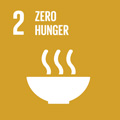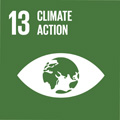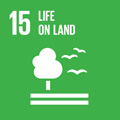- Docente: Alessandro Buscaroli
- Credits: 6
- SSD: AGR/14
- Language: Italian
- Moduli: Alessandro Buscaroli (Modulo 1) Denis Zannoni (Modulo 2)
- Teaching Mode: In-person learning (entirely or partially) (Modulo 1); In-person learning (entirely or partially) (Modulo 2)
- Campus: Ravenna
- Corso: Second cycle degree programme (LM) in Environmental Assessment and Management (cod. 8418)
Learning outcomes
At the end
of the course, the student can appreciate the value of the soil,
which is a not
renovable resource. It knows the factors that lead the genesis and
the development of soils. The student is able to use the instruments
and the methods in order to set up a pedological survey and to
perform the main physical chemical analyses. Furthermore, the student
will be able to classify soils, to interpret and to use the
information in order to estimate the soil quality, in relation to
the various land use destinations and to pressures to which soil
can be subject.
Course contents
Pedology, soil, biogeochemical spheres, soils importance and functions. The soil forming factors: climate, bedrock, morphology, biotic factor, time. The processes of soil formation and evolution. The main surface horizons (epipedon) and depth horizons (endopedon). The set up of pedological survey: use of cartography, remote sensing and GIS for the identification of landscape units. The pedological survey: profile description, horizons sampling, laboratory analysis, results interpretation. Soil classification and cartography. The appraisal of soil quality, Land Capability Classification (LCC), Land Suitability Evaluation (LSE), Quality Indices (IQ). Soil reclamation and fertilization. The soils and Internet.Lows on soils.
Readings/Bibliography
Certini G., Ugolini F. C. (2010 first ed. and 2021 second ed.). Basi di pedologia. Edagricole. Bologna.
Dazzi C. (2013). Fondamenti di pedologia. Ed. Le Penseur.
IUSS Working Group WRB (2014). World Reference Base for Soil Resources 2014. 2 nd Ed. World Soil Resources Report, No. 10. FAO, Rome.
MiPAF (2006). Metodi di valutazione dei suoli e delle terre. Osservatorio Nazionale Pedologico e per la Qualità del Suolo Agricolo e Forestale. Edizioni Cantagalli, Siena.
MiPAF (2015). Metodi di analisi chimica del suolo. 3° versione. A cura di C. Colombo e T. Miano. Pubblicità e Stampa (BA).
Schoeneberger P.J., Wysocki D.A., Benham E.C., and Soil Survey Staff (2012). Field book for describing and sampling soils, Version 3.0. Natural Resources Conservation Service, National Soil Survey Center, Lincoln, NE.
Soil Survey Staff (2014). Keys to Soil Taxonomy, 12 th edition, USDA - NRCS, Washington D.C., USA.
Selected papers.
Teaching methods
Power point presentations, practices in GIS and chemical
laboratory, field trips. Depending on the evolution of the COVID 19 pandemic, lessons may be held in presence, at distance, or in a mixed mode.
Assessment methods
Verification of student learning will be done based on a pedological research that the student will present to the committee. The discussion that will open at the end of the presentation will be directed to the verification of the level of knowledge reached by the student, regarding in particular: importance and functions of soil, pedogenetic factors, processes of formation and evolution of soils, characteristics of the main pedogenetic horizons, soil and environment. In addition, particular emphasis will be given to the knowledge of methods and criteria of soil survey, connected with the use of cartographic and GIS tools. Moreover, during the discussion, knowledge of sampling methods and main laboratory analytical techniques will be tested, as well as the use of analytical results in order to reach an assessment of soil quality for its sustainable use.
Teaching tools
Video projector, GIS laboratory, chemical laboratory, field trip
in several environs for observing pedological profiles and
performing simple chemical tests. TEAMS, VIRTUALE and PANOPTO platforms will be used to support the teaching activity as repository of shared materials.
Office hours
See the website of Alessandro Buscaroli
See the website of Denis Zannoni
SDGs




This teaching activity contributes to the achievement of the Sustainable Development Goals of the UN 2030 Agenda.
